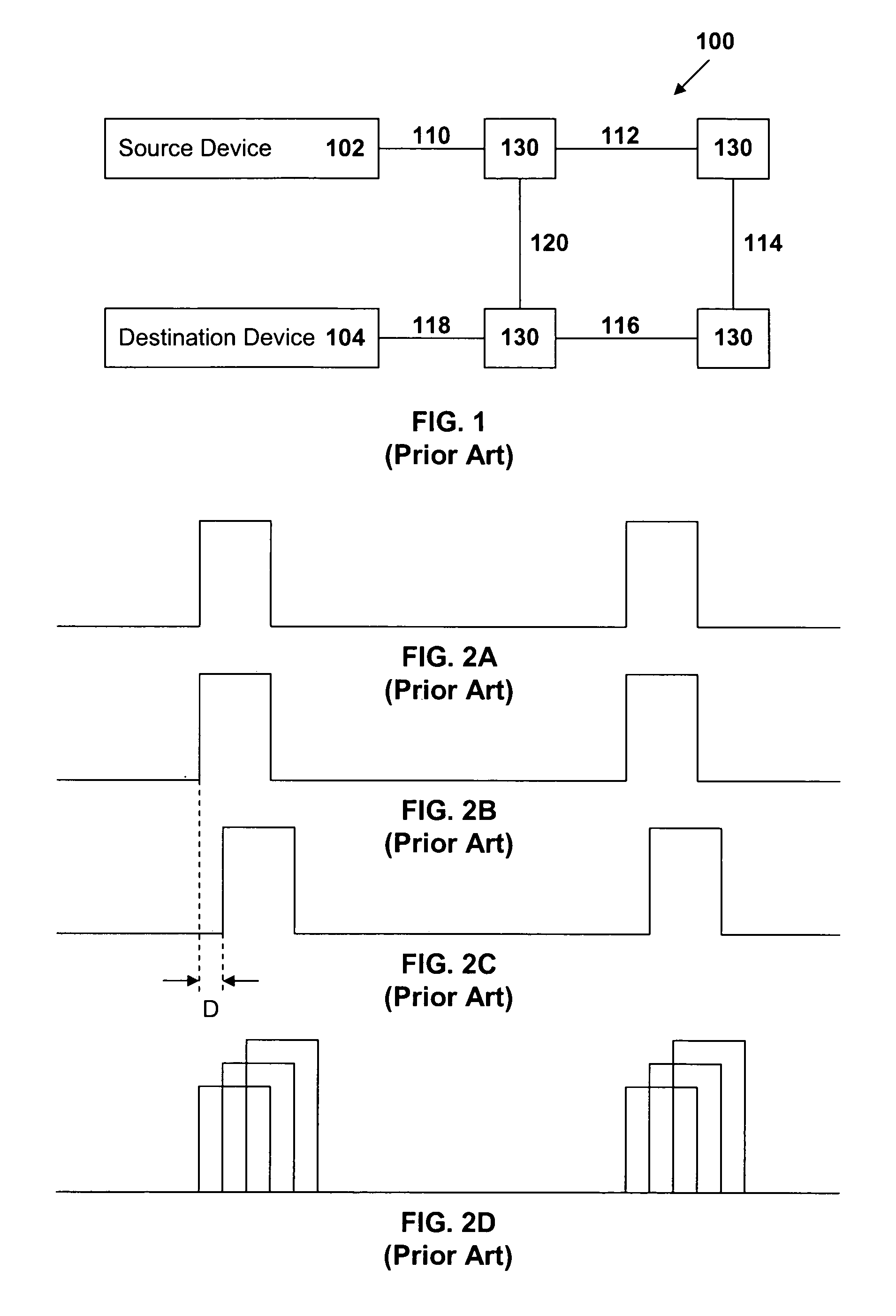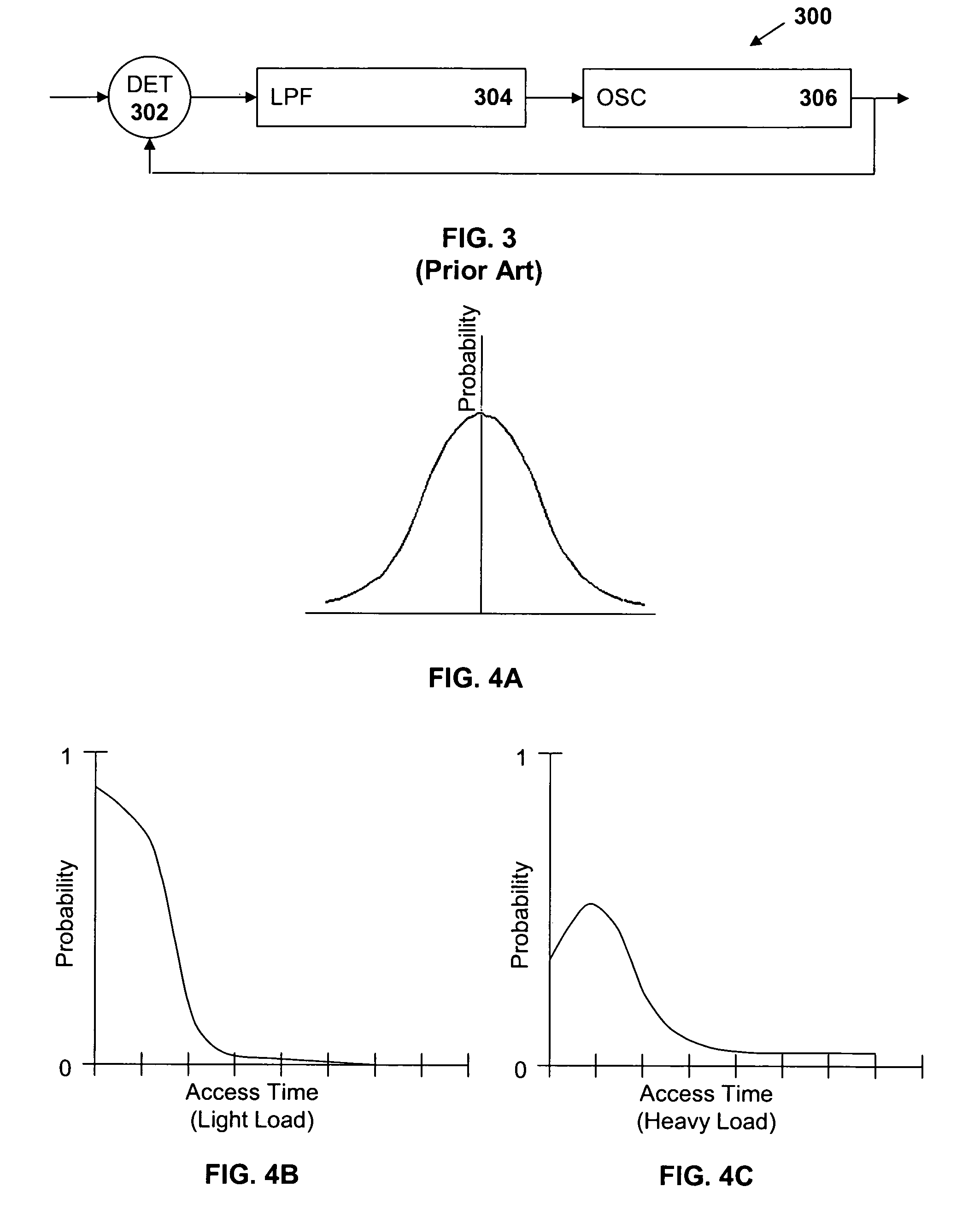Exploiting shortest path for improved network clock distribution
a network clock and shortest path technology, applied in the field of signal distribution, can solve the problems of unsatisfactory in large network environments, delay in actual signals, etc., and achieve the effects of enhancing signal contribution, reducing delay, and improving signal to noise ration
- Summary
- Abstract
- Description
- Claims
- Application Information
AI Technical Summary
Benefits of technology
Problems solved by technology
Method used
Image
Examples
Embodiment Construction
[0020]FIG. 5 is a block diagram of one embodiment of circuitry 500 of the present invention. The detector 500 includes a dual-input phase-sensitive detector 502, a low pass filter 504, and a voltage-controlled oscillator 506, elements common to the PLL of FIG. 3. Additionally, the device 500 includes a processor 520, such as an exponential scaler 508, coupled between the detector 502 and the low pass filter 504. The scaler 508 exaggerates the effects of small errors (which represent small delays and are close to the ideal in FIG. 4B) and reduces the effects of larger errors (which represent larger errors and are farther from the ideal). Thus, while the device generates an average, the average generated is closer to the ideal.
[0021]FIG. 6 is a block diagram of a second embodiment of the device 600 of the present invention. The device 600, includes a dual-input phase-sensitive detector 602, a low pass filter 604, and a voltage-controlled oscillator 606 and a processor 620 comprising a...
PUM
 Login to View More
Login to View More Abstract
Description
Claims
Application Information
 Login to View More
Login to View More - R&D
- Intellectual Property
- Life Sciences
- Materials
- Tech Scout
- Unparalleled Data Quality
- Higher Quality Content
- 60% Fewer Hallucinations
Browse by: Latest US Patents, China's latest patents, Technical Efficacy Thesaurus, Application Domain, Technology Topic, Popular Technical Reports.
© 2025 PatSnap. All rights reserved.Legal|Privacy policy|Modern Slavery Act Transparency Statement|Sitemap|About US| Contact US: help@patsnap.com



